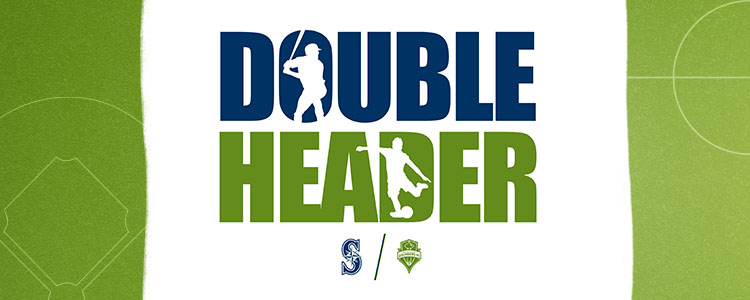The 400 Year Old Brothers:
Shoin, just last week, while discussing Pinchas, we quoted several medroshim with regard to his age, and whether or not he was efsher still alive. Recall that by this time in history, the RBSO had already shortened life spans down to a more manageable 120 though a few did live a bit longer. Avada you recall that before the Mabul, people lived hundreds of years, ober post the great flood, the heylige Toirah tells us that our forefathers -Avrohom, Yitzchok and Yaakov- only lived 175, 180 (Yitzchok), and 147 years. By the time Moishe will pass away –another few weeks in Toirah time- life spans will be down to approximately 120 years. Despite all that we concluded that Pinchas was at least 300 years old though some argue that he was closer to 500 years of age. And this week? Well, we’re back with another installment on two, or maybe even three more people who seemed to have lived hundreds of years. Though two of them are not very famous, they do get shout outs in this week’s parsha. And not just did they surpass 120, it’s efsher shayich that they lived hundreds of years, maybe closer to 400 or so years. And who are they? We’ll get to them soon as they are mentioned at the very end of Parshas Matos in pisukim you might –in the ordinary course- never look at but for the fact that this year, we’ll also be reading and closing out Sefer Bamidbar with Parshas Masei. In any event, well get to them shortly, ober let’s begin here.
Three months ago, the Oisvorfer finally graduated to an iPhone and a week later, to one of the greatest inventions ever, Air Pods.
 These smallish supplements are placed into one’s ears and allow users to answer and talk on the phone without holding the device in one’s hand. They are quite amazing. Ober, they are temperamental and from time to time, and for reasons which are rather inexplicable, one works while the other needs to be resynched. And so it’s been for the last three months; only one of the air pods would instantly synch up while the other -no matter how many attempts were made- remained out of synch. It’s been three months mamish since the last time the left air pod worked: it has been toyt (dead) mamish. Ober just today the Oisvorfer decided it was time to get a replacement and sync back up. Seemingly three months is the longest Yiddin should ever remain out of synch. Azoy? Says who? We shall address that below, ober speaking of synching up, they say –informed sources on the internet- that when the National Association, a precursor to Major League Baseball began in 1871, there was no such concept as a doubleheader. Baseball games were played and when over, the teams and the fans left the ball parks. Professional baseball had its first double header on July 4th, 1871. It was the only double header played for the next five years. They also say that the double header did not come about by design; instead, it was seemingly invented by weather conditions. A game needed to be canceled due to inclement weather and shoin, in order to get back into synch with a pre- established schedule of games, double headers were introduced. This allowed the leagues to get back in synch with their schedules as intended.
These smallish supplements are placed into one’s ears and allow users to answer and talk on the phone without holding the device in one’s hand. They are quite amazing. Ober, they are temperamental and from time to time, and for reasons which are rather inexplicable, one works while the other needs to be resynched. And so it’s been for the last three months; only one of the air pods would instantly synch up while the other -no matter how many attempts were made- remained out of synch. It’s been three months mamish since the last time the left air pod worked: it has been toyt (dead) mamish. Ober just today the Oisvorfer decided it was time to get a replacement and sync back up. Seemingly three months is the longest Yiddin should ever remain out of synch. Azoy? Says who? We shall address that below, ober speaking of synching up, they say –informed sources on the internet- that when the National Association, a precursor to Major League Baseball began in 1871, there was no such concept as a doubleheader. Baseball games were played and when over, the teams and the fans left the ball parks. Professional baseball had its first double header on July 4th, 1871. It was the only double header played for the next five years. They also say that the double header did not come about by design; instead, it was seemingly invented by weather conditions. A game needed to be canceled due to inclement weather and shoin, in order to get back into synch with a pre- established schedule of games, double headers were introduced. This allowed the leagues to get back in synch with their schedules as intended.
And we lead with a shtikel discussion about double-headers because this coming shabbis, while our brothers over in the Promised Land will be reading parshas Masei only, here in the diaspora, we will be reading the last of the double headers, the combined parshas of Matos and Masei. Who arranged the calendar so that we are out of synch with the people in holy land for these past three months? The bottom line: pages can be written on this topic and were: here then is a very short summary of how this all came about.
 Our current schedule of parsha reading was set up in Bavel (Babylonia) by the geonim. Who were they? In case you forgot, the Geonim were the presidents of the two great Babylonian Talmudic Academies of Sura and Pumpidisa and were the generally accepted spiritual leaders of the Jewish community worldwide in the early medieval era.At the time, Israeli communities were generally using a triennial cycle, in various variations. Starting and ending on Shavuos was common. Some would use a 3-1/2 year division, so that the Toirah was read and completed twice per Shmittah cycle. The system was not designed for Israel. Bikitzur (in short) how the parshas are laid out and when we read two in one shabbis, is all related to but four rules found in the Shulchan Oruch (OC 428:4). One of them tells us azoy: the last parshah before Shovuis is usually Bamidbar, except when it’s a leap year that started on a Thursday. In that case, we read parshas Nosi. And guess what? We’re in a leap year, givaldig! Veyter. Our rabbis wanted us to read the ‘toichocho’ (rebuke) found in parshas Bichukoisai before Shovuis. With the rebuke out of the way, we may enter this special Yom Tov where we celebrate kabolas haToirah, with its full gravity. On the other hand, it’s not to be read too close to Yom Tov as it may brings down the mood. Shoin: to keep the mood and to efsher enhance it, changes were made and parsha readings rearranged. Gey veys (go know) that mood enhancement was also discovered by our great sages. Ober, why don’t we catch up to our brothers over in Israel at the very first opportunity when such opportunity has been staring us in the face for over two months? And the answer: much has been written on that topic, ober all that for another day.
Our current schedule of parsha reading was set up in Bavel (Babylonia) by the geonim. Who were they? In case you forgot, the Geonim were the presidents of the two great Babylonian Talmudic Academies of Sura and Pumpidisa and were the generally accepted spiritual leaders of the Jewish community worldwide in the early medieval era.At the time, Israeli communities were generally using a triennial cycle, in various variations. Starting and ending on Shavuos was common. Some would use a 3-1/2 year division, so that the Toirah was read and completed twice per Shmittah cycle. The system was not designed for Israel. Bikitzur (in short) how the parshas are laid out and when we read two in one shabbis, is all related to but four rules found in the Shulchan Oruch (OC 428:4). One of them tells us azoy: the last parshah before Shovuis is usually Bamidbar, except when it’s a leap year that started on a Thursday. In that case, we read parshas Nosi. And guess what? We’re in a leap year, givaldig! Veyter. Our rabbis wanted us to read the ‘toichocho’ (rebuke) found in parshas Bichukoisai before Shovuis. With the rebuke out of the way, we may enter this special Yom Tov where we celebrate kabolas haToirah, with its full gravity. On the other hand, it’s not to be read too close to Yom Tov as it may brings down the mood. Shoin: to keep the mood and to efsher enhance it, changes were made and parsha readings rearranged. Gey veys (go know) that mood enhancement was also discovered by our great sages. Ober, why don’t we catch up to our brothers over in Israel at the very first opportunity when such opportunity has been staring us in the face for over two months? And the answer: much has been written on that topic, ober all that for another day.
The bottom line: in leap years such as the one we find ourselves in, it taka takes a full three months to get re-synched with the parsha being read this coming shabbis over in Israel. Why? Ver veyst? That’s the way it is and let’s instead –as we say goodbye to Sefer Bamidbar- review a tidbit found at the very end of Matos, one that the Oisviorfer never focused on before. Next shabbis, on Tishe Be’Ov mamish –pushed off this year until Sunday- we will be reading Sefer Devorim where Moishe recounts all that’s happened to the Yiddin during his tenure as their leader. Though Sefer Devorim is also known as Mishneh Toirah- a review of the entire Toirah, somehow another 200 or so new mitzvis will be revealed to the Yiddin.
Nu, let’s get back to our parsha and the two brothers you mistama never heard of and let’s begin by reading the following pisukim. Says the heylige Toirah (Bamidbar 32:40-42) innaveynig, azoy:
| לב:מ וַיִּתֵּ֤ן מֹשֶׁה֙ אֶת הַגִּלְעָ֔ד לְמָכִ֖יר בֶּן מְנַשֶּׁ֑ה וַיֵּ֖שֶׁב בָּֽהּ׃ לב:מא וְיָאִ֤יר בֶּן מְנַשֶּׁה֙ הָלַ֔ךְ וַיִּלְכֹּ֖ד אֶת חַוֺּתֵיהֶ֑ם וַיִּקְרָ֥א אֶתְהֶ֖ן חַוֺּ֥ת יָאִֽיר׃ לב:מב וְנֹ֣בַח הָלַ֔ךְ וַיִּלְכֹּ֥ד אֶת קְנָ֖ת וְאֶת בְּנֹתֶ֑יהָ וַיִּקְרָ֧א לָ֦ה נֹ֖בַח בִּשְׁמֽוֹ׃ | 32:40 So Moishe gave Gilad to Mochir son of Menashe, and he settled there. Yair son of Menashe went and captured their villages, and renamed them Havvoth-yair. And Noivach went and captured Kenath and its villages, and renamed it Noivach after himself.” |
In plain English: as Moishe was dividing the Land, the city of Gilad was given to Mochir, the son of Menashe, and he also gave some land to Noivach. We’ll get to what they did next shortly. For now, halt kup; pay close attention to who is who lest you get confused. Let’s keep our eyes on the two brothers, both sons of Menashe. Sons of Menashe? The same Menashe who was the son of Yoisef? Seemingly so. Ober where did we first hear of these two brothers? And for that answer, let’s harken back to Sefer Bereishis (50:23) where we read azoy:
| נ:כג וַיַּ֤רְא יוֹסֵף֙ לְאֶפְרַ֔יִם בְּנֵ֖י שִׁלֵּשִׁ֑ים גַּ֗ם בְּנֵ֤י מָכִיר֙ בֶּן־מְנַשֶּׁ֔ה יֻלְּד֖וּ עַל־בִּרְכֵּ֥י יוֹסֵֽף: | 23 Yoisef saw Ephraim’s children of the third generation; the sons of Mochir son of Menashe were also born on Yoisef’s knees. |
In other words: Yoisef had two boys, Ephraim and Menashe. Of course you remember them; we all bentch our kids on Friday nights by referencing these two heylige brothers. Yoisef was alive to see Ephraim’s children of the third generation. And he was still alive to see grandchildren from Menashe. The bottom line: Mochir was Menashe’s son. Veyter. And the question is azoy: is the Mochir mentioned above in our parsha which takes place as the Yiddin, after 40 years in the midbar, and after at least 210 years in slavery over in Mitzrayim, the same Mochir shouted out in Bereishis? If he is, then Mochir was at least 250 years old and likely over 300 years old since slavery did not begin until Yoisef died. And according to those who hold that the Yiddin were in Mitzrayim for at least 400 years, this Mochir was likely closer to 400 than 250. And was he in good shape at that age?
But wait: something else is apparent. If Yoisef gave them land, mistama they were alive and were meant to enter the Land. Ober didn’t we learn some parshas back (Shelach) that the RBSO decreed that only Yihoishua and Kolave would -from that generation of males- enter the land? Indeed we did! Moreover, this same Mochir, who knew his grandfather Yoisef (and perhaps even his great-grandfather Yaakov), so says the posik above, must have participated in the conquest of the land. When Mochir went to Gilead, he didn’t just move in; he needed to drives its inhabitants out first. Pshat is that he was not just alive and chugging along, he was in damn good shape for a man his age. Nu, posik 41 tells us that his brother Yair then occupied the villages and renamed them. Bottom line: both Yair and Mochir seemed to have been blessed by the RBSO with not just long life, but also got a special pass to enter the Promised Land though, according to the heylige Toirah’s words, only Yihoishua and Kolave had their proverbial visas stamped.
And listen to this: says the heylige Gemora: (Buba Basra 121b), azoy:
| יאיר בן מנשה ומכיר בן מנשה נולדו בימי יעקב, ולא מתו עד שנכנסו ישראל לארץ, | Yair ben Menashe and Mochir ben Menashe were born in the days of Yaakov but did not die until Israel entered the land. |
It’s the same two we met in Bereishis. Does everyone? Was there another set of them on the loose? Did Moishe efsher give the land to another set of brothers with the same names but who were not the sons of Menashe? And wouldn’t that be a coincidence mamish? Says the Ibn Ezra azoy: the sons of Menashe alluded to in these pisukim are not the actual sons of Menashe, but rather they were his descendants. They were instead descendants of the sons of Menashe. In other words: just because Mochir is referred to as the “son” (“beyn” in Hebrew), it’s also sahyich (possible) to use the word “beyn” to mean a descendent. In plain English: the Hebrew word בן can mean “descendant” mamish, as well as literal “son.” And the Ibn Ezra says this why? Because he –unlike most of us who went to yeshiva, also knew the Novee where in Divrey Hayomim (1 Chronicles), Yair is no longer Menashe’s son but his great grandson who was named after his grandfather as is the custom until this day. And if that’s the case –and why shouldn’t it be- neither Mochir nor Yair would have been old at this point in time. In fact, they would have been born in the midbar and were therefore allowed to enter the Promised Land And taka the words in our parsha (Bamidbar 32:39) may taka refer to Mochir’s descendants (as opposed to Mochir himself). Says the Novee (Chronicles 2:21-23), azoy:
| 21. And afterwards, Hezron came to the daughter of Mochir, the father of Gilad, and he took her, and he was sixty years old, and she bore him Segub. | כאוְאַחַ֗ר בָּ֚א חֶצְרוֹן֙ אֶל־בַּת־מָכִיר֙ אֲבִ֣י גִלְעָ֔ד וְה֣וּא לְקָחָ֔הּ וְה֖וּא בֶּן־שִׁשִּׁ֣ים שָׁנָ֑ה וַתֵּ֥לֶד ל֖וֹ אֶת־שְׂגֽוּב: | |
Moreover posik 39 of our parsha is not clear as to who Mochir’s sons were; maybe it was generations later.
| 39. The children of Mochir the son of Manasseh went to Gilead and conquered it, driving out the Amorites who were there. | לטוַיֵּ֨לְכ֜וּ בְּנֵ֨י מָכִ֧יר בֶּן־מְנַשֶּׁ֛ה גִּלְעָ֖דָה וַיִּלְכְּדֻ֑הָ וַיּ֖וֹרֶשׁ אֶת־הָֽאֱמֹרִ֥י אֲשֶׁר־בָּֽהּ: |
Ober on the other hand, the very next posik may say farkert: there – in posik 40- we read that Mochir himself (not just his sons) received the land from Moishe, and the posik which follows is explicit that his brother Yair (not his brother’s sons) conquered the villages and renamed them “ Chavois Yair.” Were they Menashe’s son’s mamish or further down the generational highway? Ver veyst!
The bottom line: if, as the heylige Toirah tells us and avada every word in the Toirah is mamish real, that Mochir was Menashe’s son, and that he is alive and well in our parsha, and that he participated in the conquest of the land as the posik tells us about his brother Yair, then both brothers would have been well over 120 years of age and mistama somewhere between 300 and 400. Other than Pinchas we have not met anyone in the heylige Toirah (once life spans were shortened) that lived hundreds of years and also got to participate in the conquest of the land. Why the heylige Toirah did not mention that these two boys were over 300 and perhaps closer to 400 and they got special dispensation, a pass mamish, to enter, ver veyst? Got questions? Mark them down and one day when you meet the RBSO, feel free to ask Him. For now, our tafkid (mission) is to read, study and believe no matter how challenging.
And we close with this: lest you think that this week’s parsha was mamish chapless, the Oisvorfer apologizes. He only provides color when the Toirah itself, the heylige Gemora, or the medirsh provides some. Ober let’s not forget to mention a posik we read just last week in parsha Pinchas which told us azoy: says the heylige Toirah (Bamidbar 26:29), azoy:
| 29. The descendants of Menashe: the family of the Mochirites from Mochir and Mochir’s son was Gilead; the family of the Giladites from Gilad. | כט בְּנֵ֣י מְנַשֶּׁ֗ה לְמָכִיר֙ מִשְׁפַּ֣חַת הַמָּֽכִירִ֔י וּמָכִ֖יר הוֹלִ֣יד אֶת־גִּלְעָ֑ד לְגִלְעָ֕ד מִשְׁפַּ֖חַת הַגִּלְעָדִֽי: | |
The same Mochir we’ve been discussing had a son named Gilad. Later in the Novee (Shoiftim 11:1-2) we learn that Gilad has a number of sons with his wife, but his most famous son, Yiftach, was born to a zoina (prostitute)! So nice of the Novee -in pre Google days- to remind us all of his inglorious family tree.
| יא:א וְיִפְתָּ֣ח הַגִּלְעָדִ֗י הָיָה֙ גִּבּ֣וֹר חַ֔יִל וְה֖וּא בֶּן אִשָּׁ֣ה זוֹנָ֑ה וַיּ֥וֹלֶד גִּלְעָ֖ד אֶת יִפְתָּֽח: יא:בוַתֵּ֧לֶד אֵֽשֶׁת גִּלְעָ֛ד ל֖וֹ בָּנִ֑ים… | 11:1 Now Yiftach the Giladite, the son of a prostitute, was a mighty warrior. Gilad was the father of Yiftach11:2 Gilad’s wife also bore him sons… |
As an aside, if Gilad was taka born while the Yiddin were still enslaved and he is the same Gilad we find in the Novee (most agree that he is), he too lived a long life. Not 200 and not 3 or even 400 years. Gilad would have been 600 years old and still managed a night or more with the zoina! Impressive! The key to long life?
Chazak, chazak, a gittin Shabbis, a meaningful Tishe Be’ov- nidcha, and an easy fast!
The Heylige Oisvorfer Ruv
Yitz Grossman

